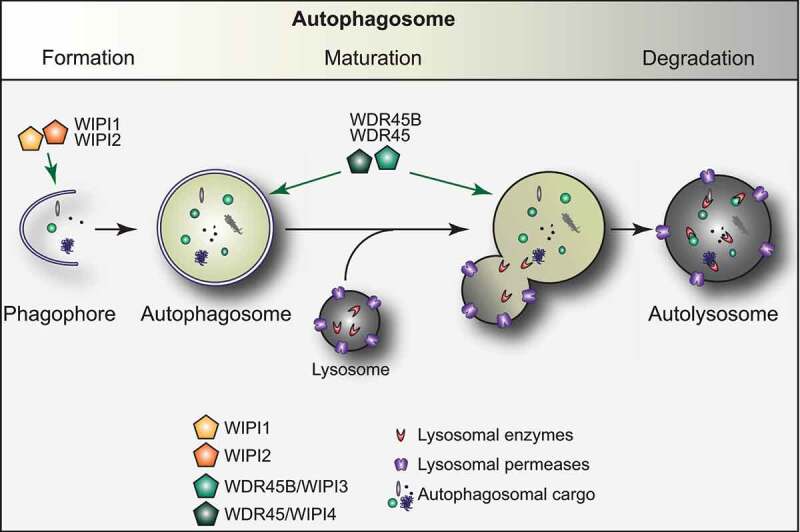Figure 1.

The autophagy pathway and the role of the WIPI proteins. Autophagy is an evolutionary conserved process essential to maintain cellular homeostasis. Autophagy is characterized by the development of a transient membranous cisterna known as the phagophore, into a double-membraned vesicle, called the autophagosome, which then fuses with lysosomes to release its cargo into the hydrolytic interior of this organelle. The process of autophagosome formation and maturation is regulated by autophagy-related (ATG) proteins. While WIPI1 and WIPI2 play a key role during the early stages of the biogenesis of an autophagosome, WDR45 and WDR45B have an upstream function, later during the autophagosome formation
